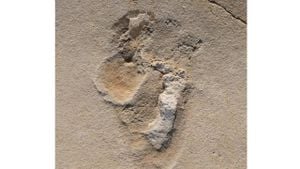Marine mammals are experiencing significant challenges, with their habitats increasingly threatened by human activities.
Recent studies are highlighting the complex interactions between marine mammals and offshore wind farms, raising important questions about the future of these gentle giants.
For example, the Taranaki Offshore Partnership (TOP) has begun deploying marine detection devices in the South Taranaki Bight to understand the impact of proposed wind turbines on local whale populations.
This area is home to significant marine life, including pygmy blue whales and southern right whales, all of which are vulnerable to the noise and disturbances from construction.
The detection devices, equipped with hydrophones, will record the vocalizations of these marine mammals over the next twelve months.
According to TOP's environmental manager, Alison Lane, this unprecedented study aims to map out the presence of these whales, providing valuable data for future conservation efforts.
"We want to know where they are, so we can develop targeted surveys to understand their behavior, how they use the area, and how many of them exist," Lane explained.
This level of monitoring is critical, especially since construction of the 70 proposed turbines, which could power about 11% of New Zealand’s electricity needs, is on the horizon.
Without adequate data collection, the risk of disrupting these species increases significantly.
The devices are part of a broader commitment to responsible environmental stewardship during the wind farm development process.
By gathering comprehensive data under the guidance of marine mammal specialists, the partnership hopes to develop strategies to mitigate potential disruptions.
They plan to employ techniques like bubble curtains to reduce noise and using listening devices to stop construction if any whales or dolphins are detected nearby.
This proactive approach reflects lessons learned from international projects, ensuring they proceed thoughtfully.
Meanwhile, on the opposite side of the world, another significant event drew attention to marine conservation. At the Phoenix Palladium mall, visitors were treated to the "Whistling Whales" installation, brought to life by PETA India.
This artistic display features life-sized whale sculptures, crafted with exceptional detail to showcase the beauty and vulnerability of these marine mammals.
The event aimed not just to educate but also to inspire action to protect marine life, engaging families through storytelling sessions about the threats facing these giants.
Meenakshi Narang, Senior Education Coordinator at PETA India, raised awareness about bycatch - the unintended capture of marine animals during fishing operations.
"Bycatch is the most significant threat to marine wildlife," Narang stated, urging attendees to recognize the importance of ocean conservation.
Activities such as these serve to bridge the gap between art, science, and advocacy, motivating the next generation toward stewardship of our oceans.
Visitors to the installation left with souvenirs to remind them of their role as guardians of the environment.
Such initiatives are part of the bigger picture, emphasizing the need for active participation from the public to address ocean conservation issues.
Adding to this narrative, kayakers Mark and Nigel Taylor spotted a minke whale off Sunderland's North Sea coast, marking a rare encounter with marine wildlife.
This experience highlights the continuing presence of these whales along the British coastline, often attracted by local herring and sprat.
Mark described the sighting as surreal, noting how the whale swam alongside their kayak before disappearing below the waves.
Minke whales are known for their impressive size, reaching lengths of up to 30 feet, but their sightings remain infrequent, highlighting the importance of protecting marine ecosystems.
With these encounters and studies underway, the spotlight firmly remains on the vitality of marine mammals and their environments.
By investing time and resources to better understand how structures like wind turbines impact these species, operators are taking steps toward forging a sustainable balance.
Cooperation among environmentalists, researchers, and the general public will be pivotal as we navigate these complex relationships and work toward preserving our oceans.
Encouragingly, educational efforts, conservation initiatives, and local actions seem promising as they strive to safeguard the marine life for future generations.
Perspectives from various stakeholders—including environmentalists, iwi members, and community advocates—underline the diverse viewpoints on marine development and conservation.
Thus, as we witness both the challenges and the strides made toward protecting marine mammals, there's hope yet for their survival amid changing ocean landscapes.
The blend of community engagement, research, and awareness creates a strong foundation for better stewardship of our marine environments.



